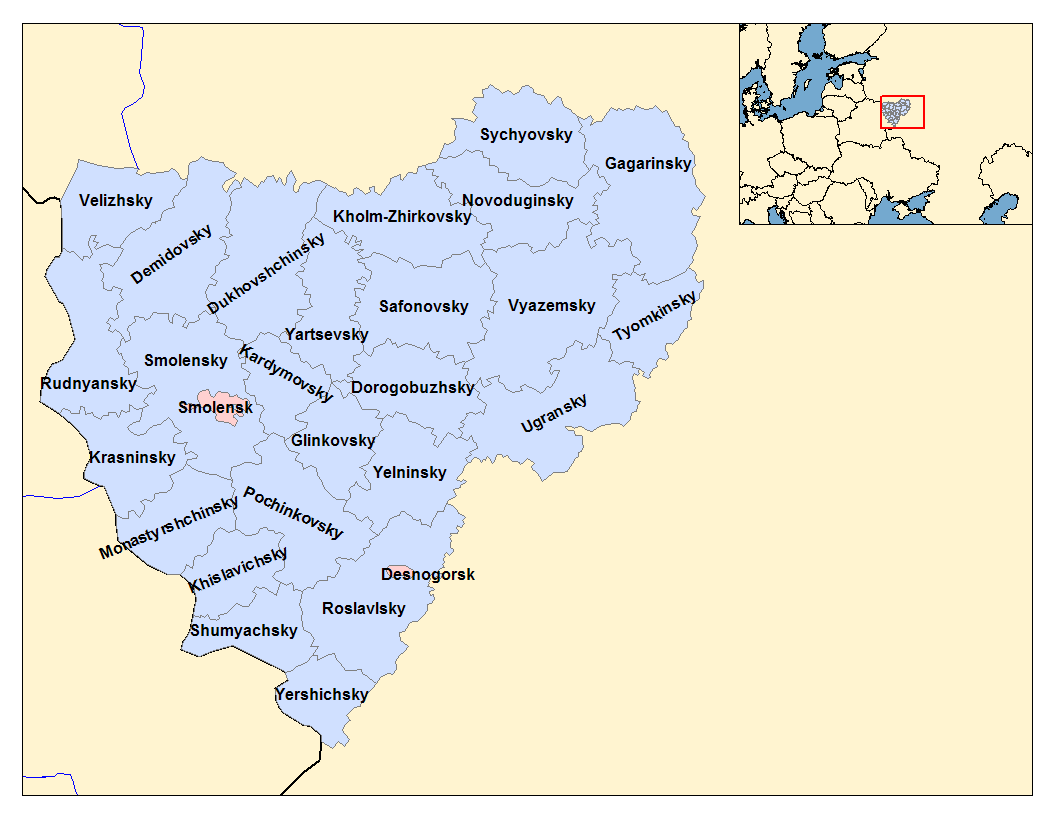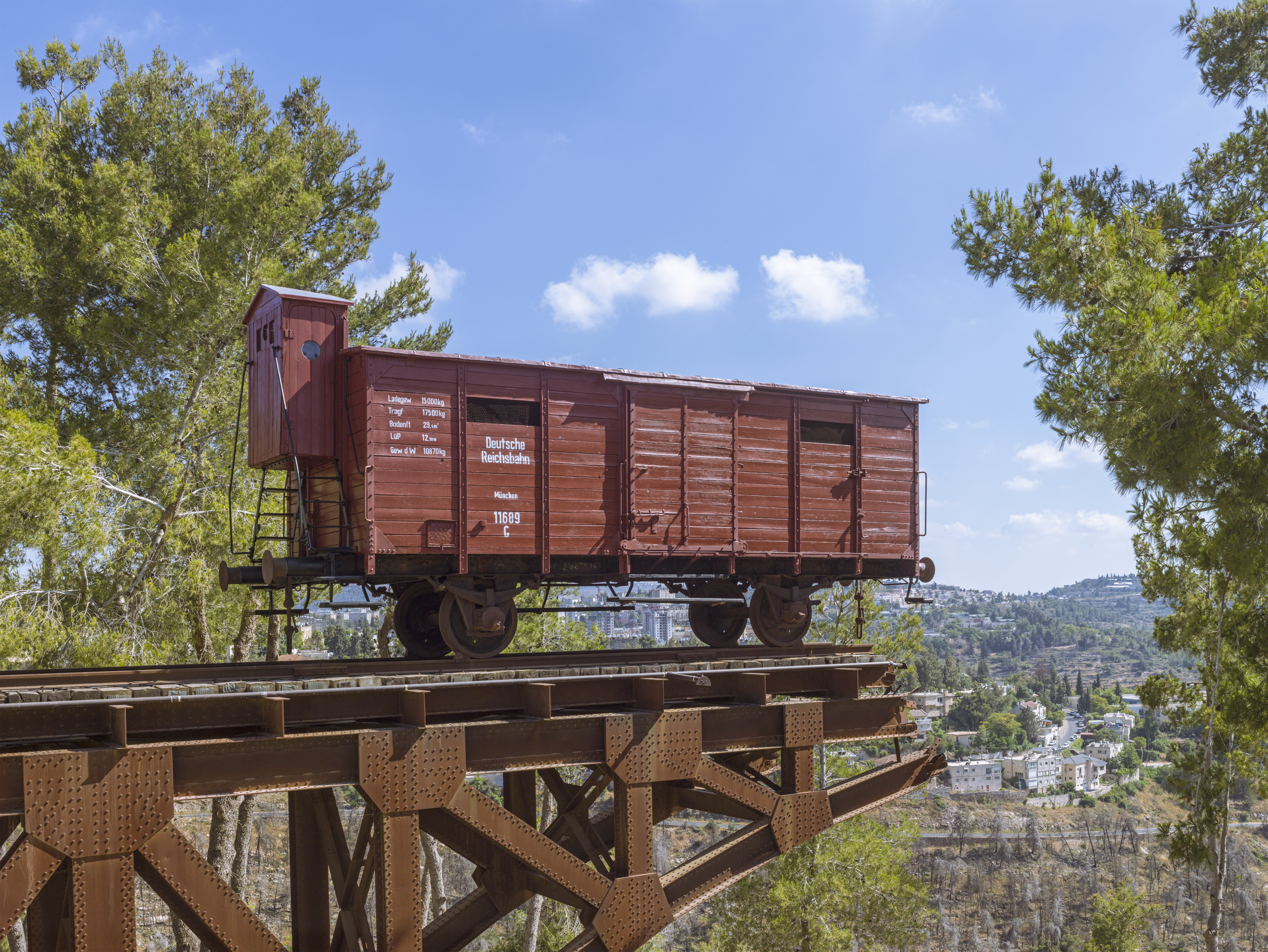|
Gusino (village), Krasninsky District, Smolensk Oblast
Gusino () is a village in Krasninsky District Krasninsky District is the name of several administrative and municipal districts in Russia: *Krasninsky District, Lipetsk Oblast, an administrative and municipal district of Lipetsk Oblast *Krasninsky District, Smolensk Oblast Krasninsky Di ... of Smolensk Oblast, Russia, located in the west of Krasninsky District, 20 kilometers north of the district administrative center of Krasny and near the M1 ("Belarus") and P135 highways. The population as of 2007 is 3,252 persons in an area of 5.55 km2. Geography There is a train station on the Moscow - Minsk line. The village is the administrative center of the Gusinsky rural settlement. The local economy is centered on forestry and the production of peat, lumber, and drainage pipes. The telephone dialing code is +7 48145, the postal code is 216117. History In the 1930s, a Jewish kolkhoz (collective farm) was established at Gusoni. On the eve of World War II, the impor ... [...More Info...] [...Related Items...] OR: [Wikipedia] [Google] [Baidu] |
Krasninsky District, Smolensk Oblast
Krasninsky District (russian: Кра́снинский райо́н) is an administrativeResolution #261 and municipalLaw #77-z district (raion), one of the twenty-five in Smolensk Oblast, Russia. It is located in the west of the oblast and borders with Rudnyansky District in the north, Smolensky District in the east, Monastyrshchinsky District in the south, Horki District of Mogilev Region of Belarus in the southwest, and with Dubrowna District of Vitebsk Region, also of Belarus, in the west. The area of the district is . Its administrative center is the urban locality (a settlement) of Krasny. Population: 12,895 ( 2010 Census); The population of Krasny accounts for 33.7% of the district's total population. Geography Most of the district's territory is located on the Smolensk-Krasninsky Plateau. Soils of the area are formed mostly of loam, sand, and sandy loam. Forests cover 29.3% of the territory. The whole area of the district belongs to the drainage basin of the Dnieper. ... [...More Info...] [...Related Items...] OR: [Wikipedia] [Google] [Baidu] |
Smolensk Oblast
Smolensk Oblast (russian: Смоле́нская о́бласть, ''Smolenskaya oblast''; informal name — ''Smolenschina'' (russian: Смоле́нщина)) is a federal subject of Russia (an oblast). Its administrative centre is the city of Smolensk. As of the 2010 Census, its population was 985,537. Geography The oblast was founded on 27 September 1937.Исполнительный комитет Смоленского областного совета народных депутатов. Государственный архив Смоленской области. "Административно-территориальное устройство Смоленской области. Справочник", изд. "Московский рабочий", Москва 1981. Стр. 8 It borders Pskov Oblast in the north, Tver Oblast in the northeast, Moscow Oblast in the east, Kaluga Oblast in south, Bryansk Oblast in the southwest, and Mogilev and Vitebsk Oblast ... [...More Info...] [...Related Items...] OR: [Wikipedia] [Google] [Baidu] |
Russia
Russia (, , ), or the Russian Federation, is a List of transcontinental countries, transcontinental country spanning Eastern Europe and North Asia, Northern Asia. It is the List of countries and dependencies by area, largest country in the world, with its internationally recognised territory covering , and encompassing one-eighth of Earth's inhabitable landmass. Russia extends across Time in Russia, eleven time zones and shares Borders of Russia, land boundaries with fourteen countries, more than List of countries and territories by land borders, any other country but China. It is the List of countries and dependencies by population, world's ninth-most populous country and List of European countries by population, Europe's most populous country, with a population of 146 million people. The country's capital and List of cities and towns in Russia by population, largest city is Moscow, the List of European cities by population within city limits, largest city entirely within E ... [...More Info...] [...Related Items...] OR: [Wikipedia] [Google] [Baidu] |
Krasny, Krasninsky District, Smolensk Oblast
Krasny (russian: Кра́сный) is an urban locality (an urban-type settlement) and the administrative center of Krasninsky District of Smolensk Oblast, Russia, located at the confluence of the Svinaya and the Mereyka Rivers ''Great Soviet Encyclopedia'', entry on Krasny southwest of Smolensk. Population: History Krasny (originally Krasn or Krasen) is first mentioned in 1165 by the Hypatian Codex, when Davyd Rostislavich, Prince of Smolensk, gave Krasen to his nephew, Roman of Vitebsk. Between second half of the 14th century and the middle of the 17th century, the area belonged intermittently to the Grand Duchy of Lithuania, to Poland, and to the Grand Duchy of Moscow. Since 1654, it was finally transferred to the Tsardom of Russia. In the course of the administrative reform carried out in 1708 by Peter the Great, the area was included into Smolensk Governorate and remained there until 1929, with the exception of the brief period between 1775 and 1796, when Smolensk Gover ... [...More Info...] [...Related Items...] OR: [Wikipedia] [Google] [Baidu] |
Peat
Peat (), also known as turf (), is an accumulation of partially decayed vegetation or organic matter. It is unique to natural areas called peatlands, bogs, mires, moors, or muskegs. The peatland ecosystem covers and is the most efficient carbon sink on the planet, because peatland plants capture carbon dioxide (CO2) naturally released from the peat, maintaining an equilibrium. In natural peatlands, the "annual rate of biomass production is greater than the rate of decomposition", but it takes "thousands of years for peatlands to develop the deposits of , which is the average depth of the boreal orthernpeatlands", which store around 415 gigatonnes (Gt) of carbon (about 46 times 2019 global CO2 emissions). Globally, peat stores up to 550 Gt of carbon, 42% of all soil carbon, which exceeds the carbon stored in all other vegetation types, including the world's forests, although it covers just 3% of the land's surface. ''Sphagnum'' moss, also called peat moss, is one of th ... [...More Info...] [...Related Items...] OR: [Wikipedia] [Google] [Baidu] |
Kolkhoz
A kolkhoz ( rus, колхо́з, a=ru-kolkhoz.ogg, p=kɐlˈxos) was a form of collective farm in the Soviet Union. Kolkhozes existed along with state farms or sovkhoz., a contraction of советское хозяйство, soviet ownership or state ownership, sovetskoye khozaystvo. Russian plural: ''sovkhozy''; anglicized plural: ''sovkhozes''. These were the two components of the socialized farm sector that began to emerge in Soviet agriculture after the October Revolution of 1917, as an antithesis both to the feudal structure of impoverished serfdom and aristocratic landlords and to individual or family farming. The 1920s were characterized by spontaneous emergence of collective farms, under influence of traveling propaganda workers. Initially, a collective farm resembled an updated version of the traditional Russian "commune", the generic "farming association" (''zemledel’cheskaya artel’''), the Association for Joint Cultivation of Land (TOZ), and finally the kolkhoz. T ... [...More Info...] [...Related Items...] OR: [Wikipedia] [Google] [Baidu] |
Ghetto
A ghetto, often called ''the'' ghetto, is a part of a city in which members of a minority group live, especially as a result of political, social, legal, environmental or economic pressure. Ghettos are often known for being more impoverished than other areas of the city. Versions of the ghetto appear across the world, each with their own names, classifications, and groupings of people. The term was originally used for the Venetian Ghetto in Venice, Italy, as early as 1516, to describe the part of the city where Jewish people were restricted to live and thus segregated from other people. However, early societies may have formed their own versions of the same structure; words resembling ''ghetto'' in meaning appear in Hebrew, Yiddish, Italian, Germanic, Old French, and Latin. During the Holocaust, more than 1,000 Nazi ghettos were established to hold Jewish populations, with the goal of exploiting and killing the Jews as part of the Final Solution. [...More Info...] [...Related Items...] OR: [Wikipedia] [Google] [Baidu] |
World War II
World War II or the Second World War, often abbreviated as WWII or WW2, was a world war that lasted from 1939 to 1945. It involved the vast majority of the world's countries—including all of the great powers—forming two opposing military alliances: the Allies and the Axis powers. World War II was a total war that directly involved more than 100 million personnel from more than 30 countries. The major participants in the war threw their entire economic, industrial, and scientific capabilities behind the war effort, blurring the distinction between civilian and military resources. Aircraft played a major role in the conflict, enabling the strategic bombing of population centres and deploying the only two nuclear weapons ever used in war. World War II was by far the deadliest conflict in human history; it resulted in 70 to 85 million fatalities, mostly among civilians. Tens of millions died due to genocides (including the Holocaust), starvation, ma ... [...More Info...] [...Related Items...] OR: [Wikipedia] [Google] [Baidu] |
Yad Vashem
Yad Vashem ( he, יָד וַשֵׁם; literally, "a memorial and a name") is Israel's official memorial to the victims of the Holocaust. It is dedicated to preserving the memory of the Jews who were murdered; honoring Jews who fought against their Nazi oppressors and Gentiles who selflessly aided Jews in need; and researching the phenomenon of the Holocaust in particular and genocide in general, with the aim of avoiding such events in the future. Established in 1953, Yad Vashem is located on the western slope of Mount Herzl, also known as the Mount of Remembrance, a height in western Jerusalem, above sea level and adjacent to the Jerusalem Forest. The memorial consists of a complex containing two types of facilities: some dedicated to the scientific study of the Holocaust and genocide in general, and memorials and museums catering to the needs of the larger public. Among the former there are a research institute with archives, a library, a publishing house, and an educational ... [...More Info...] [...Related Items...] OR: [Wikipedia] [Google] [Baidu] |
Rural Localities In Smolensk Oblast
In general, a rural area or a countryside is a geographic area that is located outside towns and cities. Typical rural areas have a low population density and small settlements. Agricultural areas and areas with forestry typically are described as rural. Different countries have varying definitions of ''rural'' for statistical and administrative purposes. In rural areas, because of their unique economic and social dynamics, and relationship to land-based industry such as agriculture, forestry and resource extraction, the economics are very different from cities and can be subject to boom and bust cycles and vulnerability to extreme weather or natural disasters, such as droughts. These dynamics alongside larger economic forces encouraging to urbanization have led to significant demographic declines, called rural flight, where economic incentives encourage younger populations to go to cities for education and access to jobs, leaving older, less educated and less wealthy populat ... [...More Info...] [...Related Items...] OR: [Wikipedia] [Google] [Baidu] |
Holocaust Locations In Russia
The Holocaust, also known as the Shoah, was the genocide of European Jews during World War II. Between 1941 and 1945, Nazi Germany and #Collaboration, its collaborators systematically murdered some Holocaust victims, six million Jews across German-occupied Europe; around two-thirds of Europe's Jewish population. The murders were carried out in pogroms and #Mass shootings, mass shootings; by a policy of extermination through labor in Nazi concentration camps, concentration camps; and in Nazi gas chambers, gas chambers and gas vans in German extermination camps, chiefly Auschwitz concentration camp#Auschwitz II-Birkenau, Auschwitz-Birkenau, Belzec extermination camp, Bełżec, Chełmno extermination camp, Chełmno, Majdanek concentration camp, Majdanek, Sobibor extermination camp, Sobibór, and Treblinka extermination camp, Treblinka in Occupation of Poland (1939–1945), occupied Poland. Germany implemented the persecution in stages. Following Adolf Hitler's appointment ... [...More Info...] [...Related Items...] OR: [Wikipedia] [Google] [Baidu] |

.jpg)
_Panorama.jpg)



